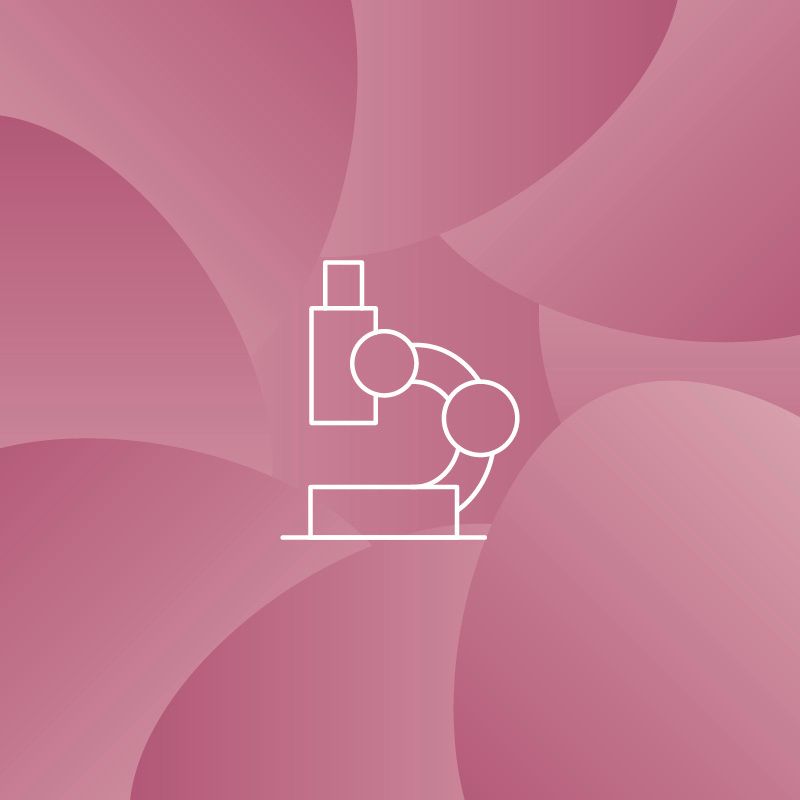
We specialize in comprehensive breast surgery and place particular emphasis on aesthetic results.
Breast operations are surgical procedures performed for benign or malignant diseases of the breast. They can serve both diagnostic and therapeutic purposes and include procedures such as breast biopsies, tumorectomies (tumor removals) or mastectomies (breast removals).
Removal of benign changes (fibroadenomas)
What is a fibroadenoma?
A fibroadenoma is a benign lump of connective and glandular tissue that is usually between 1 and 3 cm in size. It feels smooth and movable on palpation and rarely causes any discomfort. Fibroadenoma removal is not intended to prevent cancer, but as a treatment for growth, symptoms or at the patient's request.
When will it be removed?
- Rapid growth in size
- Change in breast shape
- Pressure or tension pain
- Desire for removal (e.g. before pregnancy)
Important for you to know:
A tissue sample must always be taken before a planned removal in order to know that it is a benign change, as the surgical method differs from the removal of a breast cancer.
Surgical removal
The incision is usually made directly above the fibroadenoma in order to remove the lump in a targeted manner. However, if the finding is in a sensitive area such as the décolleté, the incision can be moved to a less conspicuous location.
We coordinate the exact planning with you individually - according to your wishes and the anatomical conditions.
Breast surgery for breast cancer
Breast-conserving operations for breast cancer
Breast-conserving surgery is now a common and proven method of treating early-stage breast cancer. The aim is to remove the tumor completely with a safety margin while preserving the natural shape of the breast as far as possible.
These procedures are usually supplemented by subsequent radiotherapy to minimize the risk of recurrence.
Breast-conserving therapy is possible in 70-80% of cases.
Depending on the tumor size, location and breast shape, a basic distinction is made between lumpectomy and segmentectomy.
Lumpectomy
- Removal of the tumor with a small margin of healthy tissue ("tumor with safety margin")
- Well suited for smaller tumors
- Preservation of the breast shape is possible without any problems
Segmentectomy
- Removal of a larger breast segment, usually a "pie slice" including tumor
Oncoplastic surgery
Breast-conserving surgery using modern techniques - for your safety and aesthetics
Thanks to oncoplastic procedures, even larger breast tumors can now be removed without compromising the shape of the breast. We combine proven cancer surgery with plastic surgery techniques - individually tailored to your breast shape and tumor location.
What does "oncoplastic" mean?
Oncoplastic surgery combines tumor removal with immediate reconstruction in a single procedure. The aim is to remove the tumor completely while preserving - and often even improving - the natural shape of the breast. This usually results in larger scars for the benefit of the breast shape than with conventional breast-conserving surgery, as parts of the mammary glands have to be moved over a greater distance in order to close the defect created by the tumor removal.
Overview of the most important techniques
The surgical technique is selected according to the size of the volume to be removed, your breast size, breast density and tumor location.
Minor interventions (up to 20 % volume removal)
- Intraglandular displacement flap: the tumor is removed, surrounding glandular and fatty tissue is displaced to fill the defect
- Breast shape is retained, no skin removal necessary
- Ideal for small tumors and dense breast structure
- Quick recovery
Larger interventions (20-50 % volume removal)
- Used for larger tumors or unfavorable locations.
- Breasts are reshaped in a similar way to a breast reduction
- Skin and glandular tissue are adapted
Depending on the location of the tumor in the breast, different techniques are used to remove it and reshape the breast. Here are some examples of quadrant-specific oncoplastic surgical techniques:
Tumor-adapted reduction plasty (volume displacement)
These techniques are based on classic breast reduction surgery and are particularly suitable for women with large or ptotic (sagging) breasts. In this case, the shape of the breast is corrected at the same time as the cancer is removed. This means that even larger tumours can be safely removed and the aesthetic result directly optimized.
Local flap plastics
After tumor removal, neighboring tissue is used specifically for reconstruction after a larger volume has been removed.
Grisotti technique
This method is particularly suitable for tumors in the areola area that need to be removed. A circular skin and elongated glandular flap from the lower part of the breast is rotated into the defect. The skin component forms the new areola and the breast remains symmetrical.
Round-block (periareolar technique)
This surgical technique is derived from the breast lift and is suitable for small to medium-sized tumors in the upper part of the breast around the areola.
Adjustment of the opposite side (contralateral adjustment)
If necessary, the shape and size of the healthy breast is adjusted to achieve optimum symmetry. This can be done at the same time or at a later date.
Your advantages
- Breast conservation even with larger tumors or multiple tumors in one breast
- Natural appearance through individual reconstruction
- Covering of larger defects, simultaneous tightening
- Good oncological safety with simultaneous radiotherapy
These techniques are planned individually in our practice and discussed with you in detail. Together we will find the best solution for your health and well-being.
Mastectomy techniques
If the tumor-to-breast ratio is unfavorable or if the patient wishes, complete removal of the breast tissue is chosen.
What is a mastectomy?
A mastectomy is the complete removal of the mammary gland tissue. The skin and nipple are also removed.
However, there are techniques in which the skin and/or nipple are preserved, which are then combined with breast reconstruction.
Types of mastectomy
Simple mastectomy: removal of the mammary gland including skin and nipple; lymph nodes remain untouched
Modified radical mastectomy: Like simple mastectomy plus removal of the axillary lymph nodes and the muscle sheath (fascia) of the large pectoral muscle
Skin-sparing mastectomy: preservation of the skin envelope, removal of the mammary gland and nipple.
Subcutaneous or nipple-sparing mastectomy: preservation of skin and nipple; only the glandular tissue is removed
Your advantages
- Definitive tumor removal
- Basis for immediate or later reconstruction
Breast reconstruction
What does breast reconstruction mean?
The breast is reconstructed after a surgical procedure - either directly after the mastectomy in the same operation or at a later date.
The aim is to give you back a natural breast shape that suits you.
What options are there?
The body's own tissue
- Skin and subcutaneous fatty tissue with or without muscle from the abdomen, leg, buttocks or back are used here
- This method uses your natural resources and often delivers a particularly harmonious result.
- Advantages: Natural feel, no foreign materials
- Disadvantages: Longer operation time, donor site scars
Lipofilling (autologous fat transfer)
- Fat tissue is removed from other parts of the body (e.g. abdomen, thighs), processed and transferred to the breast.
- This method is particularly suitable for refining the shape or as a complementary step with or after other reconstruction procedures.
Foreign material (implant/expander)
- Implants are used in a similar way to aesthetic breast augmentation.
- If the definitive breast reconstruction is not performed in one step with the cancer operation, a breast expander is used after a mastectomy (breast removal). This is a flexible silicone container that is gradually filled with saline solution. It serves as a placeholder under the skin or pectoral muscle.
- Advantages: Shorter operation time, fewer scars
- Disadvantages: Capsule formation possible, replacement surgery necessary
We will advise you personally and honestly on which method is suitable for you - depending on your physical situation, your wishes and any necessary follow-up treatment and work closely with the plastic surgeons at the cooperating breast center to achieve the best cosmetic results.
Online appointment scheduling
Would you like to schedule an appointment? It's quick and easy with our online booking tool - we look forward to hearing from you!
Learn more
Here you will find further information about the field of senology.










